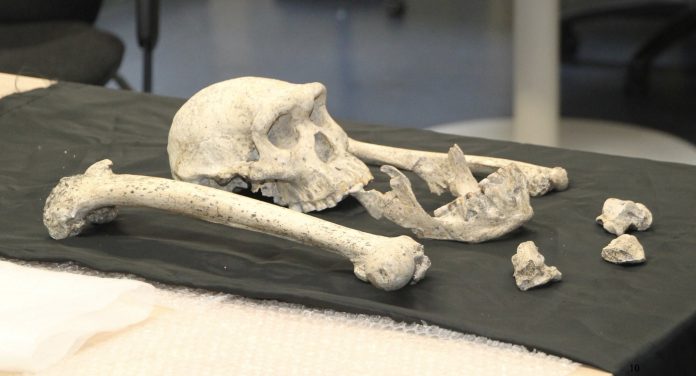
Humans have a uniquely long childhood compared to great apes, during which we develop the skills needed to navigate our complex social lives.
Scientists have long believed this prolonged childhood evolved as humans developed larger brains, which require significant time and energy to grow.
However, a new study suggests this “big brain—long childhood” theory might need a rethink.
An international research team analyzed fossil teeth from an early Homo individual who lived around 1.77 million years ago at the Dmanisi site in Georgia.
Their findings, published in Nature, indicate that the extension of childhood may have played a key role in brain evolution, not the other way around.
Teeth: A time capsule for development
The study focused on teeth because they act as records of an individual’s growth. Teeth develop in daily layers, much like tree rings, making it possible to trace their growth even millions of years later. Researchers used advanced imaging techniques, including synchrotron tomography, to create highly detailed virtual slices of the fossil teeth.
“Teeth are perfect for studying growth because they fossilize well and record daily development,” explained Christoph Zollikofer from the University of Zurich, one of the study’s authors.
The fossil, a near-adult Homo individual, provided a wealth of information about growth patterns. By examining the microscopic structures in the teeth, researchers could reconstruct the development timeline from birth to death with incredible accuracy.
Surprising findings about childhood
The fossil belonged to an individual who died at 11 or 12 years old, with wisdom teeth already erupted—a pattern more similar to great apes than modern humans. However, the back teeth (molars) developed slower than the front teeth, a pattern more like humans. This suggests that the child relied on their baby teeth longer than great apes typically do, indicating they depended on adult support for an extended period.
“This could be the first example of an extended childhood in human evolution,” said Marcia Ponce de León from the University of Zurich, another co-author of the study.
The researchers believe this prolonged childhood created opportunities for learning and passing down knowledge from older generations to younger ones.
The fossil record from Dmanisi includes an older individual who had lost all their teeth but survived for years without them. This suggests that early Homo groups cared for their elderly, allowing them to contribute their experience and wisdom to the community.
“Older individuals were likely key in teaching younger generations and preserving knowledge,” said David Lordkipanidze of the Georgian National Museum.
This three-generation structure—children, parents, and grandparents—may have been essential for the transmission of cultural knowledge, such as tool-making or foraging techniques. Over time, the need to pass on more information may have encouraged slower growth and longer lifespans.
The study challenges the idea that larger brains were the primary driver of prolonged childhood. Instead, it suggests that extended childhood and cultural learning may have come first, paving the way for larger brains to evolve later.
Young children’s brains are highly adaptable, allowing them to learn vast amounts of information. However, the more there is to learn, the longer childhood needs to be. Over generations, this slower development likely led to more complex behaviors and better use of resources, giving early humans an evolutionary advantage.
Once this process began, natural selection likely favored individuals who could transmit and learn cultural knowledge more effectively. This, in turn, supported the gradual increase in brain size and the delay in reaching adulthood.
A new perspective on human evolution
By studying the teeth of this early Homo fossil, researchers are gaining fresh insights into how our species evolved. Instead of brain size driving developmental changes, it may have been the other way around: the extension of childhood and cultural learning created the conditions for larger brains to evolve.
“This research helps us rethink the mechanisms behind human evolution,” concluded Zollikofer. “It shows how bio-cultural evolution shaped our species.”
The findings encourage scientists to further explore the role of extended childhood and community support in shaping the unique trajectory of Homo sapiens. As it turns out, our long journey to adulthood may have been the key to our evolutionary success.



